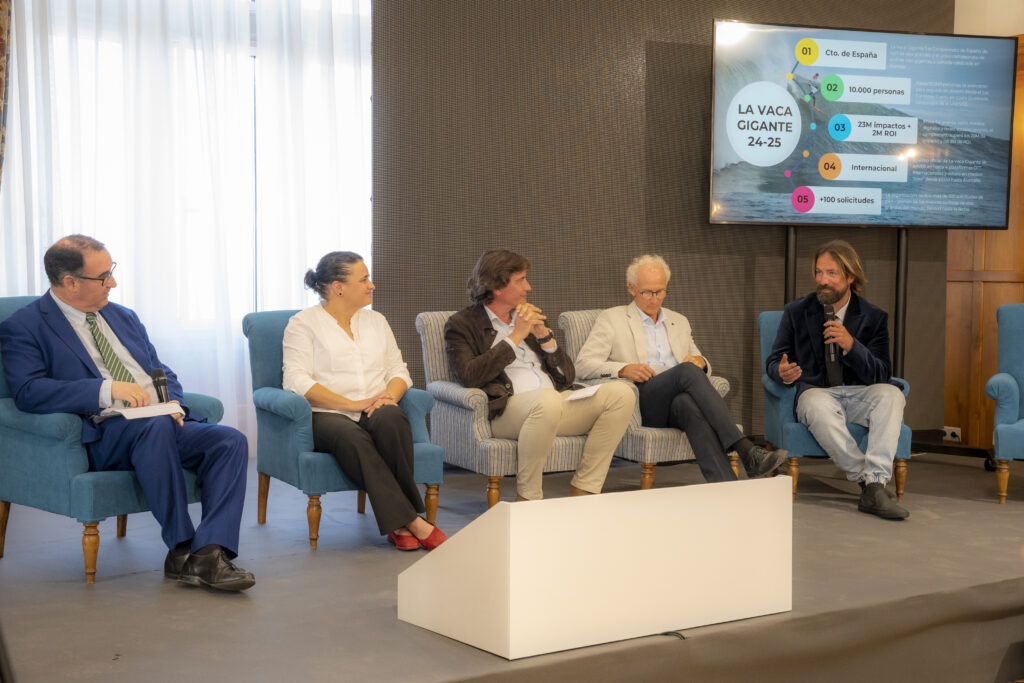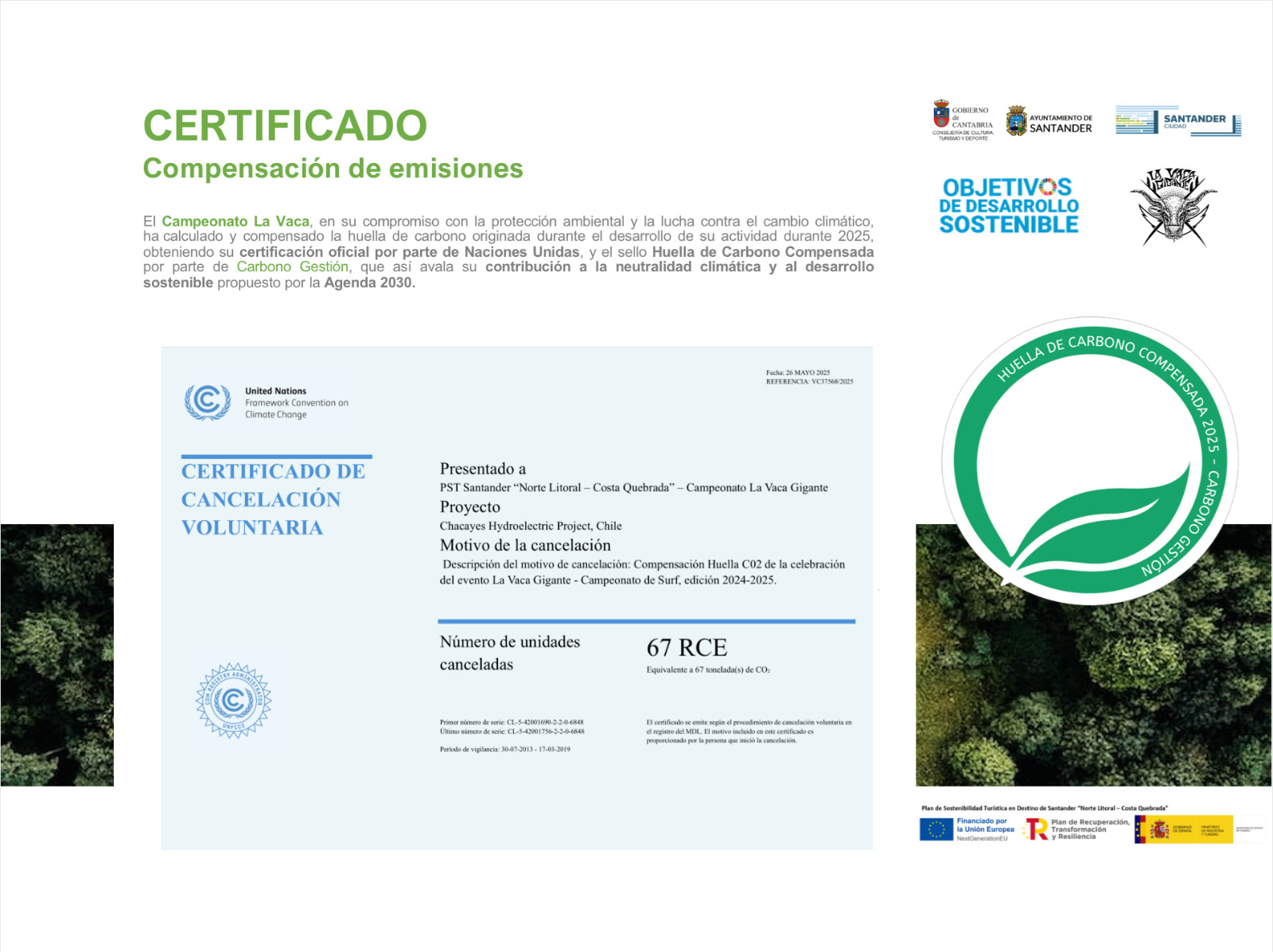

La Vaca Gigante is no longer just one of the biggest surf shows in Europe and the world, but also an international benchmark in sustainability. The United Nations has certified that the competition has fully offset its carbon footprint, making it a climate-neutral and pioneering event in its field.

Certificado Cero Emisiones de Naciones Unidas
This distinction places Santander and Cantabria on the map of sports events aligned with the Sustainable Development Goals of the 2030 Agenda.
This international recognition was the central theme of the event “Cantabria Paddles Toward the Future: Zero-Emission Sports Events,” held this Tuesday at the Palacio de la Magdalena and organized by Club ObsessionA2 with the collaboration of the Santander City Council. Pedro García, president of the club and organizer of La Vaca Gigante, was in charge of welcoming attendees, highlighting surfing’s commitment “not only to the sea, but to its future.”
Tourism Councillor Fran Arias spoke on behalf of the City Council to emphasize the role of events like La Vaca in the city’s new tourism model: “We are committed to sustainable tourism, and this championship is the best proof that it’s possible to combine spectacle, sustainability, and international projection.”
The UN certification didn’t come by chance. Carlos Sainz, representative of the consulting firm Carbono Gestión, presented the sustainability plan that made this achievement possible. “The 11th edition of La Vaca Gigante generated 66.5 tons of CO₂ equivalent, most of it associated with audience travel. Thanks to meticulous measurement, reduction, and offsetting efforts, that footprint has been completely neutralized. And now, the United Nations officially certifies it,” he explained.
According to Sainz, the key lies in identifying the sources of emissions, quantifying them, and making informed decisions. “What isn’t measured can’t be improved. This process makes ObsessionA2 an example of how a sports club can lead local climate action,” he stated. The offsetting work was carried out under international standards promoted by the UN and funded by the Santander City Council through the Tourism Sustainability Plan, since the event falls under its scope.
Moreover, the process goes beyond a mere declaration of intent. In numbers, each of the 12,000 attendees generated an average of 5.5 kilos of CO₂. The current goal is to reduce that figure through collective transportation, responsible suppliers, and partnerships with accommodations committed to decarbonization, among other strategies.
The event also presented the “La Vaca Gigante 2025 Zero Plastic Program,” led by Manuel de la Peña, environmental director and international coordinator of Conciencia Ciudadana. De la Peña explained how this program evolved over the past decade from simply collecting trash in bags to becoming part of international marine waste analysis networks. “Last year we removed 500 kilos of plastics, ropes, and nets from just one kilometer of coastline. Ninety percent of the volunteers were children,” he noted. Thanks to the collaboration with Ocean Conservancy, the data are incorporated into international scientific studies aimed at understanding the origin and composition of marine debris affecting our coast.
The subsequent roundtable, moderated by Eduardo Pesquera, featured the participation of Alberto Quijano, Director General of the Environment; municipal technician Edurne Vidal; David González, Vice President of the MARCA Maritime Cluster; Didier Fleury, President of the Cantabria Sustainability Cluster; Pedro Ruiz, director of MARE; and Pedro García on behalf of the organizing club. All agreed that Cantabria has the opportunity to become a living lab for sustainability applied to events, with La Vaca Gigante as the model.
The event was closed by the Minister of Development, Land Management, and Environment, Roberto Media, who emphasized the importance of “a sports event born from civil society now being on the radar of the United Nations for its environmental commitment. This is the path we must follow.”





